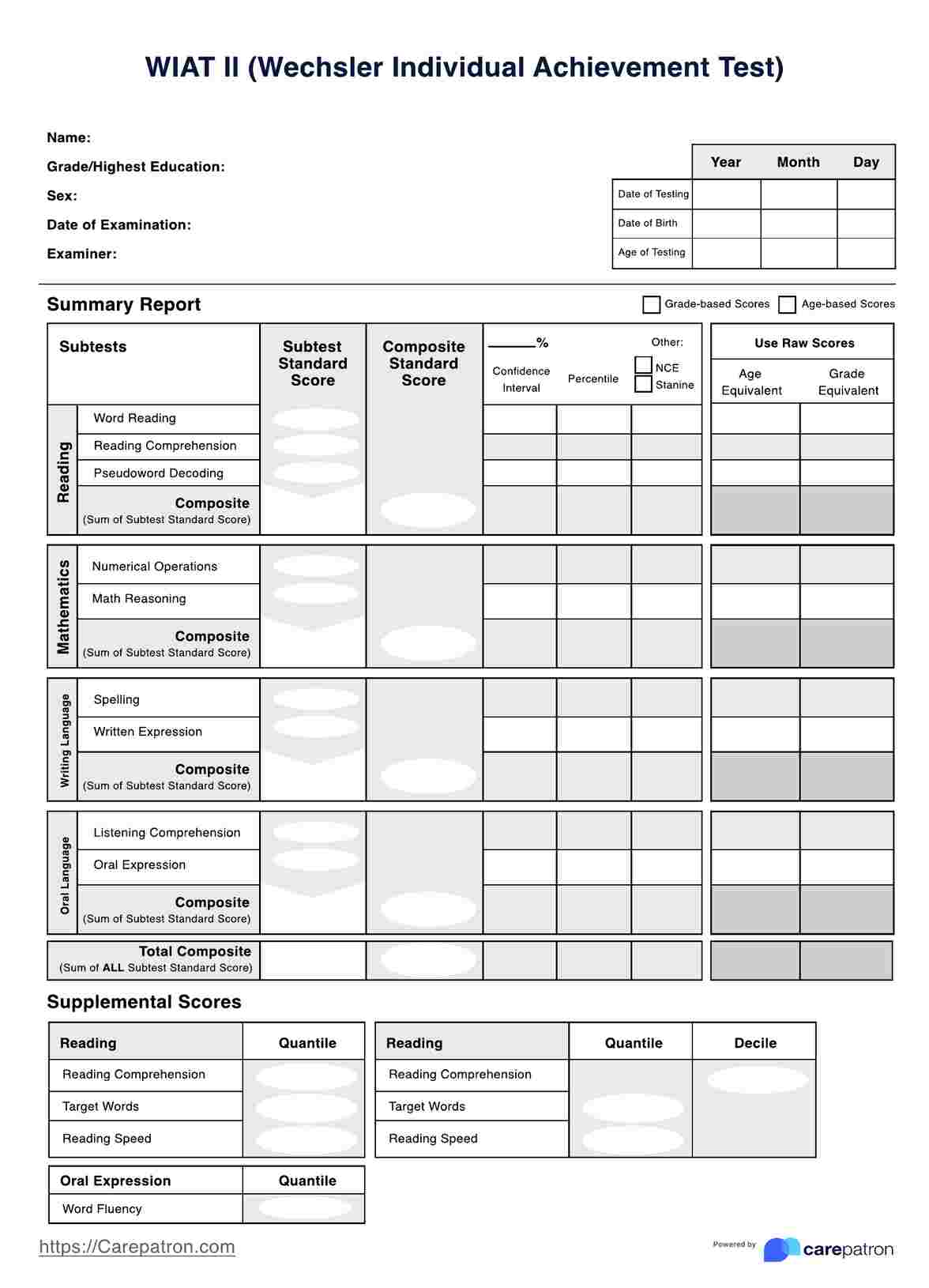The Wechsler Individual Achievement Test (WIAT) was developed by Dr. David Wechsler, a renowned psychologist known for his contributions to intelligence testing. The WIAT assesses academic achievement in domains such as reading, writing, math, and oral language and has undergone revisions to ensure its effectiveness across age groups.

WIAT
Learn about the Wechsler Individual Achievement Test, a comprehensive evaluation for effective learning. Access a free template here!
WIAT Template
Commonly asked questions
Using the Wechsler Individual Achievement Test (WIAT) involves familiarizing oneself with the administration manual, preparing the testing environment, administering subtests, scoring responses, converting raw scores to scaled scores, calculating composite scores, interpreting the results, and communicating them to stakeholders, all while ensuring standardized procedures and professional administration.
Interpreting the WIAT Test involves analyzing the obtained scores, including scaled and composite scores, in conjunction with other assessment data to gain insights into an individual's academic strengths, weaknesses, and areas requiring targeted interventions or support.
EHR and practice management software
Get started for free
*No credit card required
Free
$0/usd
Unlimited clients
Telehealth
1GB of storage
Client portal text
Automated billing and online payments











